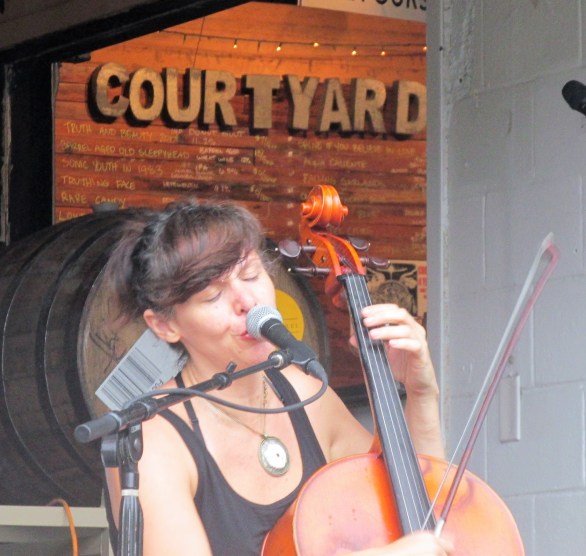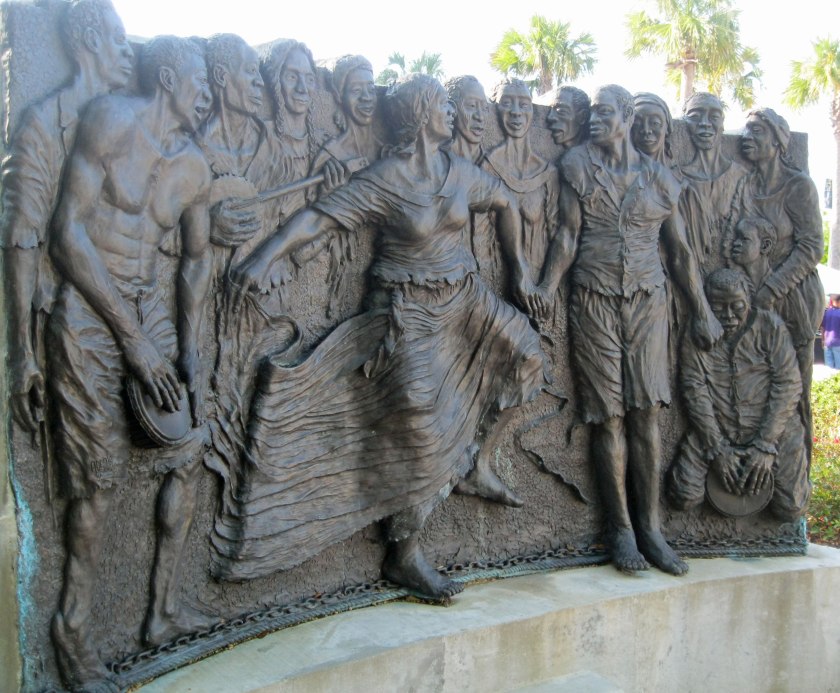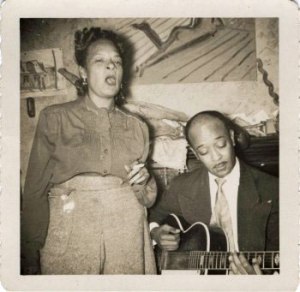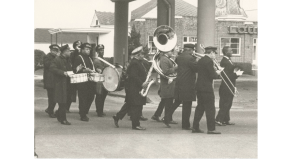I miss the days when my Dad would pull out the slide projector and set up the screen and we’d look at the slides of our last vacation. Well, get my show started and you’ll hear an audio slideshow of my trip to New Orleans last week.
Since this show was part of the KAOS pledge drive, I have the honor of Anch Bergeson, host of Sundrenched, and Vertis Love, host of Old Ship of Zion (KAOS shows) as company. I kept our discussion of New Orleans but edited out the pledge requests. However, if you want to support our community radio station, its easy to do.

For West Coast visitors, there’s a nice alignment for catching Rebirth Brass Band at the Maple Leaf Bar on Tuesday nights. Usually, flights are cheaper on Tuesday and the two-hour time change helps in terms of staying up late enough to see this venerable band that usually doesn’t start performing until after 10:30 p.m. This show recognizes how I started last week’s trip with Rebirth’s “Who’s Rockin’, Who’s Rollin”
My next set portrays our ride on the Natchez boat down the Mississippi, an easy and fun tourist activity and I feature two bands we saw later in the day at clubs on Frenchmen Street (Bon Bon Vivant and Tin Men).
I do a set featuring coffee because my wife, Kim, still raves about the cup of coffee she had at Morning Call located at City Park. Most tourists get their cafe au lait at Cafe du Monde in the French Quarter. Morning Call used to be there but now they have a wonderful place at City Park. I finish the set with a Corey Henry song because we ended the day at Vaughan’s in the Bywater for his weekly late Thursday night performance.
Lena Prima, Louis’ daughter, is a wonderful performer with an excellent band and a crowd-pleasing songbook. She holds court in the Carousel Room of the Monteleone Hotel every Friday night. I play “Scuba Diver” off her live album which pretty accurately captures the music but to catch the antics, you’ll have to wait for my narrative after that set.

I caught up with Helen Gillet at the Courtyard Brewery’s fourth anniversary party and she gave me her latest release and I play “You Found Me.” Charles Sheffield “It’s Your Voodoo Working” and Clarence “Gatemouth” Brown’s “Swamp Ghost” symbolize the Krewe of Boo parade we caught.
It took some deciphering but we figured out how to catch up with the Men of Luck’s Second Line parade on Sunday. Cyril Neville’s “Running with the Second Line.” capture that feeling.






 The Black Indians of Mardi Gras do not perform jazz but rather perform their own unique percussion based music that includes call and response vocals. The park also includes a statue honoring the Chief of Mardi Gras Indian Chiefs, Allison “Tootie” Montana, Big Chief of the Yellow Pocahontas. Tootie Montana is known for elevating the practice of masking as Native Americans to a high art form. Originally a tradition that involved revenge and violence, Mardi Gras Indians today are revered for their detailed use of beads and feathers in constructing elaborate costumes. The goal is not be the toughest, but the prettiest.
The Black Indians of Mardi Gras do not perform jazz but rather perform their own unique percussion based music that includes call and response vocals. The park also includes a statue honoring the Chief of Mardi Gras Indian Chiefs, Allison “Tootie” Montana, Big Chief of the Yellow Pocahontas. Tootie Montana is known for elevating the practice of masking as Native Americans to a high art form. Originally a tradition that involved revenge and violence, Mardi Gras Indians today are revered for their detailed use of beads and feathers in constructing elaborate costumes. The goal is not be the toughest, but the prettiest.



